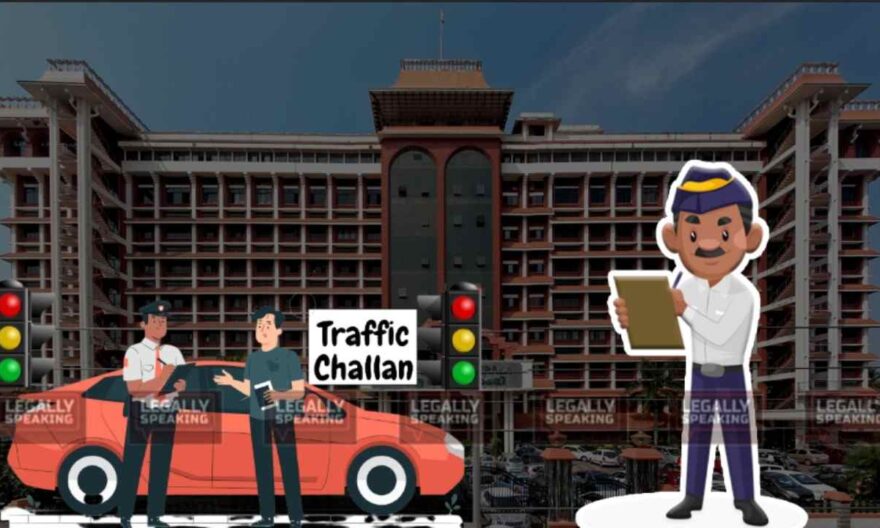
A CRPF personnel has filed a plea before the Kerala High Court challenging speeding challans issued to him, claiming that they were issued beyond the statutory time limit.
A single judge Justice C.S. Dias admitted the matter and directed the Government Pleader to obtain instructions.
According to the petitioner, two e-challans were issued on March 5, 2023, for his motor vehicle’s violation of the permissible speed limit on two occasions on September 28, 2022, as detected by an AI Camera. Upon investigation, it was revealed that it was actually the petitioner’s son who had been driving the vehicle on the mentioned date.
The petitioner argues that the two e-challans were issued in blatant violation of the provisions outlined in the Motor Vehicles Act and the Central Motor Vehicles Rules, 1989 (referred to as ‘CMVR’ henceforth). Referring to Rule 167A (9) of the CMVR, the petitioner asserts that the notice of the offense should have been issued within 15 days of the incident. However, in this particular case, the petitioner received the notice nearly 6 months after the alleged speed violation occurred.
Furthermore, it is contended that the challan should have been accompanied by a certificate under Section 65B(4) of the Indian Evidence Act, 1872, as stipulated in Rule 167A(6)(v). However, this requirement was not fulfilled, leading the petitioner to claim that the notices were riddled with discrepancies.
The petitioner states that upon noticing these discrepancies, he made a representation to the Transport Commissioner. Additionally, he highlighted the absence of signage and safety measures along the National Highway stretch. The petitioner alleges that the RTO (Regional Transport Office) admitted to the delay in sending the notices due to software changes and data updates in the parivahan seva system. Regarding road safety markings and signages, the RTO purportedly argued that such matters fell under the jurisdiction of the National Highway Authority of India (NHAI), rather than the Motor Vehicles Department (MVD).
“It is submitted that though, statutorily it may be the responsibility of the NHAI, the 1st Respondent (RTO) cannot walk away from its moral and ethical responsibility in seeing to it that the NHAI or the concerned authorities are notified about the lack of safety measures and signages on such a stretch of road, where chances of speeding is high and consequently higher the chances of accidents. And, furthermore, the 1st Respondent and its parent authorities, the 2nd Respondent (Transport Commissioner) and 3rd Respondent (State of Kerala represented by Secretary, Department of Transport), cannot merely wash of its hands from installing and implementing the various safety measures as envisaged under the Motor Vehicles Act and the various rules framed thereunder. This is more so when the electronic enforcement speed cameras are installed by the 2nd Respondent and is being used by it as a milking tool for generating revenue,” the petitioner submitted.
Consequently, the petitioner has filed the plea, requesting the court to annul the e-challans. Additionally, the plea seeks a directive to be issued to the Transport Commissioner, as well as the state and central authorities, to ensure the presence of sufficient warning signs in accordance with the prescribed Rules.




